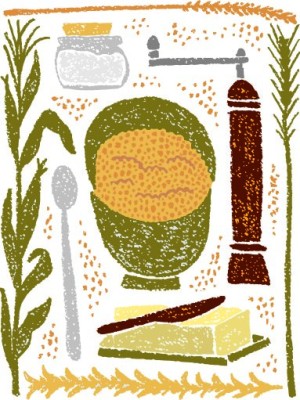
Buyer’s guide to grains
Much of the technological progress that’s allowed grains to be shelf stable has eliminated what makes them flavorful. We seek out grains made with older technology that, while being more difficult to handle, are much more flavorful.
Stones, not steel
Stone mills are an ancient technology, that, by my taste, make better tasting and more interestingly textured grains than modern steel mills. Maybe it’s because they don’t generate as much heat which means less flavor is lost. Maybe it’s because they create a more complex texture since they don’t mill as uniformly. Whatever the reason, given the choice, I go for stone ground grains every time. Our oatmeal, grits, and polenta are all stone ground.
Germs are good
At least the ones in grains are! The germ has loads of complex carbohydrates, protein, vitamins and, most importantly for me, flavor. The problem—if you think of it that way, and most big companies do—is that the germ makes grains perishable. If your grits have the germ in tact, like ours do, you can’t just put them on a shelf and forget about them. You need to freeze or refrigerate them and you need to taste them regularly to make sure they’re still good.
Heirloom varietals
While the word “heirloom” is beginning to lose its meaning from overuse, I’ll invoke it here to refer to old fashioned grain varieties whose flavor hasn’t been bred out at the expense of productivity or disease resistance. Of course some heirlooms are better than others (and many modern varieties are OK, too). We look for great tasting grains, ones made from varieties designed for our enjoyment at the table, not the company’s bottom line.